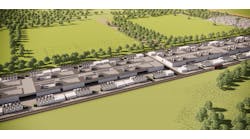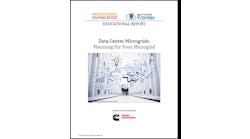Accenture’s Jack Azagury
A new report from Accenture yields some interesting surprises from utility executives about their view of smart grid technologies and deployments—and their smart grid needs.
First of all, two-thirds of utility executives surveyed believe that the benefits of smart grid and smart meter deployments will exceed forecasts.
“It’s not very often that companies embark on big projects, and say, ‘We will not only hit the business case, but will exceed it,’ says Jack Azagury, global managing director of Accenture Smart Grid Services. “That’s a strong positive response that surprised me.”
This big thumbs-up for smart grid deployments came in spite of all we hear about the opposition to smart meters by some consumers, and concerns about how smart meters will be regulated. “In spite of all that, for executives to say, ‘This will deliver value’ is interesting,” he says.
What’s more, the utility executives believe many more companies—regulated and non-regulated—will enter the smart grid business. Some will provide competition for products and services already provided by utilities, Azagury says.
Eight-five percent of utility executives surveyed expect new entrants into energy efficiency and demand response, data services and distributed power generation, the report found.
“Right now, a lot of companies outside the industry are coming in — retailers, security companies, and products companies. They are all trying to get into energy efficiency,” he says.
In some cases, the executives think these new entrants will be good for their business. In other cases, they think the new entrants represent a threat to their business. For example, 29 percent of the utility executives surveyed said that the new energy storage companies would be positive for their business.
But utilities aren’t just standing by and watching the action. They’re creating new energy efficiency opportunities within their core business. “They’re looking at how to change the relationship with customers around energy efficiency—how to create new information and data the customer can respond to,” Azagury says.
Smart grid analytics offer much potential and some challenges, the report found.
An investment in smart grid analytics can result, conservatively, in an estimated $40 to $70 in savings per electric meter per year, the report found.
All these savings would result from less energy theft, more energy efficiency savings, and more effective ways to manage voltage on the grid.
But the biggest benefit would be managing assets using real-time data. This helps utilities know when to replace or maintain assets. “All this data provides the ability to monitor assets in real time and go from time-based maintenance to predictive maintenance,” he says.
The utility executives’ say their number one smart grid investments will be in analytics and that includes workers, as well as products and services.
“Smart grid is a very broad term that includes distributed generation, electric vehicles, automation, and meters.” Top on the list of investments will be analytics—analyzing data from customers’ meters.
“The people, the software, the sensors on the grid—that’s what the utilities want to invest in, to become analytics-driven organizations. Seventy-five percent of the utility executives said that’s their top area of investment in the smart grid,” Azagury says.
And they need workers to meet that goal.
“Utilities need data scientists who bring together statistical knowledge and turn data into usable information and insights. In this country, we’re not graduating enough engineers. Utilities need not just engineers but people who can work with statistical tools. This is where utilities are struggling—finding the right people. There is a shortage. All our utility clients are looking for these types of skills.”
Read Accenture’s report here: Digitally Enabled Grid Report
Surprised about the need for workers? Do you have ideas about how the utility industry will train and find these workers? Join our LinkedIn discussion to tell us what you think!








